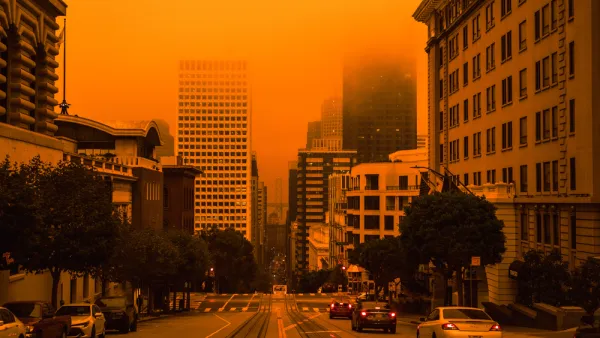The last time carbon dioxide levels were this high was a million years ago. The global community needs to reduce emissions by 80 percent to stop the increase in CO2 levels. The data was reported by the National Oceanic and Atmospheric Administration.
"For the first time since we began tracking carbon dioxide in the global atmosphere, the monthly global average concentration of this greenhouse gas surpassed 400 parts per million in March 2015, according to [National Oceanic and Atmospheric Administration] NOAA’s latest results," writes Sandy Dechert for CleanTechnica.

Credit: NOAA Research
"The measure is the key indicator of the amount of planet-warming gases man is putting into the atmosphere at record rates, and the current concentrations are unprecedented in millions of years," writes Adam Vaughan for The Guardian.
"NOAA's latest results confirm that carbon dioxide is increasing 100 times faster in the age of humans than it has in natural rises in the past," adds Dechert.
James Butler, director of NOAA’s Global Monitoring Division, adds that it would be difficult to reverse the increases of greenhouse gases which are driving increased atmospheric temperatures.
CO2 levels rising even when CO2 emissions don't increase
Dechart points to data from the International Energy Agency (IEA) indicating "that global emissions from fossil fuel energy use had stayed at the same levels last year as in 2013" but NOAA reports "that carbon dioxide concentrations actually grew from 2012 to 2014 by 2.25 ppm per year, the greatest amount ever recorded over three consecutive years."
“Elimination of about 80% of fossil fuel emissions would essentially stop the rise in carbon dioxide in the atmosphere, but concentrations of carbon dioxide would not start decreasing until even further reductions are made, and then it would only do so slowly,” states Butler.
The Guardian's Karl Mathiesen writes on the effects of rising global greenhouse gas emissions in the form of increased extreme weather events.
Global warming over the last century means heat extremes that previously only occurred once every 1,000 days are happening four to five times more often, the study published in Nature Climate Change said.
FULL STORY: New Atmospheric Carbon Dioxide Level Record, Says NOAA

Analysis: Cybertruck Fatality Rate Far Exceeds That of Ford Pinto
The Tesla Cybertruck was recalled seven times last year.

National Parks Layoffs Will Cause Communities to Lose Billions
Thousands of essential park workers were laid off this week, just before the busy spring break season.

Retro-silient?: America’s First “Eco-burb,” The Woodlands Turns 50
A master-planned community north of Houston offers lessons on green infrastructure and resilient design, but falls short of its founder’s lofty affordability and walkability goals.

Test News Post 1
This is a summary

Analysis: Cybertruck Fatality Rate Far Exceeds That of Ford Pinto
The Tesla Cybertruck was recalled seven times last year.

Test News Headline 46
Test for the image on the front page.
Urban Design for Planners 1: Software Tools
This six-course series explores essential urban design concepts using open source software and equips planners with the tools they need to participate fully in the urban design process.
Planning for Universal Design
Learn the tools for implementing Universal Design in planning regulations.
EMC Planning Group, Inc.
Planetizen
Planetizen
Mpact (formerly Rail~Volution)
Great Falls Development Authority, Inc.
HUDs Office of Policy Development and Research
NYU Wagner Graduate School of Public Service


























